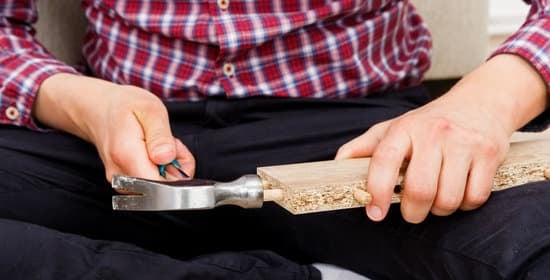Are you wondering how to refinance a mortgage for home improvements? Refinancing your mortgage is a great way to access the equity in your home to fund necessary updates or renovations. In this article, we will guide you through the process of understanding mortgage refinancing and using it to finance home improvement projects.
When it comes to understanding mortgage refinancing, it’s important to assess your current financial situation and evaluate your home’s value. This will help you determine if refinancing is the right choice for you. Additionally, researching different lenders and refinancing options can help you make an informed decision on which route to take.
Once you have a clear understanding of mortgage refinancing, you can then begin the process of preparing your finances and documents for the application. By carefully managing each step of the process, from assessing your needs to monitoring your new mortgage and home equity, you can ensure a successful outcome for your home improvement project. Stay tuned as we delve into each aspect in detail throughout this article.
Assessing Your Home Improvement Needs
Before considering a mortgage refinance for home improvements, it’s important to assess and prioritize the specific areas of your home that need updating or renovation. Whether it’s a kitchen remodel, bathroom upgrade, or outdoor landscaping project, identifying your needs will help determine the estimated cost of the improvements. Consider creating a list of priority projects and research the average costs associated with each one.
Once you’ve identified your home improvement needs, it’s essential to create a budget for the renovations. This will help you understand how much additional financing you may require through a mortgage refinance. Be sure to consider not only the cost of materials and labor but also any unexpected expenses that may arise during the renovation process.
In addition to assessing your physical home improvement needs, take some time to envision how these upgrades will enhance your overall living experience. Consider factors such as increased property value, improved energy efficiency, and aesthetic appeal when prioritizing your home improvement projects.
- Create a list of priority projects
- Research average costs associated with each project
- Create a budget for the renovations
- Envision how upgrades will enhance living experience
Evaluating Your Current Mortgage Terms
When considering refinancing your mortgage for home improvements, it is important to start by evaluating your current mortgage terms. This includes understanding the interest rate, the remaining balance, and the type of mortgage you currently have. By taking a closer look at these details, you can determine if refinancing is a viable option for funding your home improvement project.
Comparing Interest Rates and Terms
One of the key factors to consider when evaluating your current mortgage terms is the interest rate. Take the time to compare your current interest rate with the current market rates. If there has been a significant decrease in interest rates since you obtained your original mortgage, it may be worth exploring refinance options to secure a lower rate and potentially lower your monthly payments.
Assessing Your Equity Position
Another important aspect to evaluate is your equity position. This involves determining how much equity you have built up in your home since obtaining your original mortgage. Having sufficient equity can open up opportunities for cash-out refinancing, allowing you to borrow against the equity in your home to fund your home improvement project. Additionally, having a higher level of equity can also make you a more favorable candidate for refinancing in terms of loan-to-value ratio requirements.
By carefully assessing and evaluating your current mortgage terms, you can gain valuable insights into whether refinancing for home improvements is a feasible option for you. Taking the time to thoroughly review these details will better prepare you for the next steps in the refinancing process and help ensure that you make an informed decision regarding this significant financial undertaking.
Researching Lenders and Refinancing Options
After assessing your home improvement needs and evaluating your current mortgage terms, the next step in refinancing your mortgage for home improvements is researching lenders and exploring different refinancing options. Here are some steps on how to research lenders and find the best refinancing options for your needs:
- Compare Rates and Terms: Start by researching various lenders to compare their interest rates, terms, and fees. Look for reputable lenders with competitive rates and favorable terms that align with your financial goals.
- Consider Different Types of Refinancing: There are different types of mortgage refinancing options available, such as a cash-out refinance or a home equity line of credit (HELOC). Research the pros and cons of each option to determine which one suits your home improvement plans best.
- Read Customer Reviews: It’s essential to read customer reviews and testimonials about different lenders to gain insight into their customer service, responsiveness, and overall satisfaction. Look for reliable lenders with positive feedback from past clients.
Understanding the various lenders and refinancing options will help you make an informed decision when choosing the best option for your home improvement financing needs. By doing thorough research and comparing different offers, you can find a lender that not only meets your financial requirements but also provides excellent customer service.
Once you have researched various lenders and identified potential refinancing options, it’s important to reach out to them to discuss your specific needs. You can request personalized quotes, ask questions about their products and services, and seek clarification on any terms or conditions that may be unclear to ensure you fully understand the implications of each refinancing option.
This step will help narrow down your choices and ultimately select a lender that aligns with your goals for improving your home.
In addition to researching traditional banks and financial institutions, consider reaching out to mortgage brokers who can provide access to a wide range of loan products from different lenders. Mortgage brokers can offer valuable assistance in navigating through various refinancing options based on your unique circumstances, ultimately helping you find a suitable solution for financing your home improvement projects.
Preparing Your Finances and Documents
When it comes to preparing your finances and documents for a mortgage refinance for home improvements, there are several important steps to take. First, you will need to gather all the necessary financial documentation, including pay stubs, tax returns, and bank statements. This will help lenders assess your financial situation and determine if you qualify for a refinance.
In addition to gathering financial documents, it’s important to carefully review your credit report. A good credit score is crucial when applying for a mortgage refinance, as it can affect the interest rate and terms you are offered. If your credit score is less than stellar, consider taking steps to improve it before applying for a refinance.
Another important aspect of preparing your finances is evaluating your current debt-to-income ratio. Lenders will want to ensure that you have enough income to cover your existing debts as well as the new mortgage payments. Taking steps to reduce your debt or increase your income can help improve your chances of qualifying for a refinance with favorable terms.
Finally, it’s crucial to carefully consider the costs associated with refinancing, such as closing costs and fees. By understanding these costs upfront and ensuring that you have enough savings to cover them, you can avoid any financial surprises during the refinancing process.
Overall, preparing your finances and documents is a critical step in the process of refinancing a mortgage for home improvements. By taking the time to gather necessary documentation, review your credit report, evaluate your debt-to-income ratio, and understand the costs involved, you can set yourself up for success when applying for a mortgage refinance.
Applying for a Mortgage Refinance
When it comes to applying for a mortgage refinance for home improvements, there are several steps you need to follow to ensure the process goes smoothly. The first step is to evaluate your current mortgage terms and determine if refinancing is the right option for you.
This will involve reviewing your interest rate, loan term, and monthly payments to see if there is room for improvement. You may also want to consider how much equity you have in your home, as this will impact your ability to refinance.
Once you have assessed your current mortgage situation, the next step is to research lenders and refinancing options. It’s important to compare rates, fees, and terms from multiple lenders to ensure you are getting the best possible deal. You may also want to explore different types of refinancing options, such as a cash-out refinance or a home equity loan, depending on your specific needs for home improvements.
After researching lenders and options, it’s time to prepare your finances and documents for the application process. This will involve gathering pay stubs, tax returns, bank statements, and other financial documents that lenders will require during the underwriting process. It’s important to have all of these documents organized and ready to go when you start applying for a mortgage refinance.
| Steps | Description |
|---|---|
| Evaluate Current Mortgage Terms | Review interest rate, loan term, monthly payments |
| Research Lenders and Refinancing Options | Compare rates, fees, and terms from multiple lenders; explore different types of refinancing options |
| Prepare Finances and Documents | Gather pay stubs, tax returns, bank statements; have all documents organized for application process |
Managing the Home Improvement Process
Once you have successfully refinanced your mortgage for home improvements, it’s time to focus on managing the actual home improvement process. This phase involves planning and overseeing the renovation or remodeling work to ensure that everything runs smoothly and within budget. Here are some key steps to effectively manage the home improvement process after refinancing your mortgage:
Setting Clear Goals and Priorities
Before diving into the home improvement projects, it’s essential to establish clear goals and priorities for the renovations. Determine which areas of your home need the most attention and what specific upgrades or changes you want to make. Whether it’s updating the kitchen, adding a new bathroom, or enhancing outdoor living space, having a well-defined plan will help you stay on track throughout the process.
Hiring Reliable Contractors
Finding trustworthy and skilled contractors is crucial to the success of your home improvement projects. Take the time to research and interview potential contractors, checking their credentials, past work, and customer reviews. It’s also important to obtain detailed written estimates and contracts before any work begins. By working with reputable professionals, you can ensure that your home improvements are carried out efficiently and to a high standard.
Managing Time and Budget
During the home improvement process, it’s important to closely monitor both time and budget constraints. Create a realistic timeline for each project based on its scope and complexity. Additionally, keep track of all expenses related to materials, labor, permits, and other costs associated with the renovations. Staying organized and proactive in managing time and budget can help prevent delays or unexpected expenses as you enhance your home after refinancing your mortgage for these improvements.
By effectively managing the home improvement process after refinancing your mortgage for this purpose, you can transform your space into a more comfortable, functional, and aesthetically pleasing environment while maximizing the value of your investment in property ownership.
Monitoring Your New Mortgage and Home Equity
In conclusion, refinancing a mortgage for home improvements can be a strategic financial move to fund renovations and increase the value of your property. By understanding the process of mortgage refinancing and carefully assessing your home improvement needs, you can make informed decisions about whether or not this option is right for you.
Once you have evaluated your current mortgage terms and researched potential lenders and refinancing options, it’s important to prepare your finances and gather all necessary documents before applying for a mortgage refinance.
Once the refinance is complete and the funds are secured, it’s crucial to effectively manage the home improvement process. This includes staying organized, setting a budget, hiring reliable contractors, and overseeing the progress to ensure that your vision for your home is achieved. Throughout this stage, it’s essential to monitor both your new mortgage and home equity to understand how these changes may affect your overall financial situation.
Ultimately, successfully executing a mortgage refinance for home improvements requires careful planning, research, and ongoing management. By taking the time to understand the process and make informed decisions every step of the way, homeowners can unlock the full potential of their properties while also ensuring their financial stability.
Frequently Asked Questions
Can I Refinance to Make Home Improvements?
Yes, you can refinance your home to make improvements. By refinancing, you can take advantage of lower interest rates or access the equity in your home to fund renovations that will increase its value.
Can I Borrow More on My Mortgage for Home Improvements?
Borrowing more on your mortgage for home improvements is possible through a cash-out refinance. This allows you to refinance your existing mortgage for more than you owe and receive the difference in cash to use towards renovations.
Can I Refinance My Home to Build an Addition?
Refinancing your home to build an addition is feasible with a construction loan or a renovation refinance. Both options allow you to borrow against the increased value of your property once the addition is completed, providing the funds needed for construction.

I’m thrilled to have you here as a part of the Remodeling Top community. This is where my journey as an architect and remodeling enthusiast intersects with your passion for transforming houses into dream homes.





